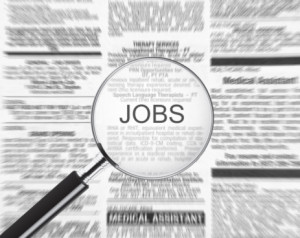The best – and bluntest – job ad we’ve seen yet

If only all employment ads could be as honest as this guy’s.
A man identified only as Justin recently posted an advertisement for a job opening at a new restaurant he’s opening in Glasgow, Scotland, in July. (Warning: Rough language, thinly disguised, follows.)
On the one hand …
Justin needs a sous chef. And he made clear that:
- “The money is sh*t. It’s 7 (pounds) an hour and a cut of the tips. Don’t ask for more because I don’t have it. … There’s no money. … You’ll literally be making more than me because I am essentially working for free until the place is paid off. … I’ll also let you order food for yourself at wholesale cost to compensate for the sh*t pay. That’s the best I can do. I’m dead serious about the money thing. Don’t come to an interview and then say it sounds great but you’ve got your kid’s school clothes to buy or whatever. I don’t care. There’s no money. Deal with it. I’m working 60 hours for half that.”
- The working conditions aren’t the greatest, and he’ll have to answer to more than one boss: “I need a second in command to bang out a ton of semi-fancy food in a kitchen the size of a closet, and you also have to put up with my wife because I do, and she’s the real boss.”
- He’s not sweating the personal details: “I don’t care if you’re super outgoing or actually mute. I don’t care if you’ve got tattoos. I don’t care if you only work in kitchens to get away from your horrible significant other. I don’t care about anything other than that you’re fast enough not to be in the weeds constantly and you want to be part of something genuine and good.”
- He’d like to streamline the application process: “Send me a real cover letter … if you’re the cover letter type. If you have one that says you’re a ‘hard-working team player that can also function well alone’ and that you ‘value customer service and punctuality’ I will stab myself in the face with a pencil and nobody will get a job. Be honest. Tell me what you want to do and why. Your actual strengths and weaknesses. I’m looking for real people with real ideas, not kids using a CV template they found online. …
“Last time I was hiring for a place I got over 400 CVs. You know how long it takes to read 400 CVs? Too f*cking long. So don’t waste anyone’s time.”
… and on the other
The job offer’s certainly not entirely negative. Justin lays out the good stuff:
- “You can also have a decent degree of creative freedom, menu-wise. I will listen to your ideas and try your weird suggestions, but if I don’t love it we’re not doing it and that’s that. …
- “You can definitely get more hours once the place has legs, and eventually we’ll be open at night so there’s the possibility that you can be the solo guy (or gal) in charge of a lot of shifts if you’re decent. In fact, if you’re awesome and you have actual cooking skills, you’ll probably be my best friend and you’ll work 55 hours a week and I’ll let you put whatever horrible music you enjoy on the stereo and buy you beer. …
- “This is a mom-and-pop type restaurant. You can learn a lot. You can have a good degree of freedom. What you cannot do is be a pain in my balls because my life savings is on the line and I have to work with my wife all day so I don’t have time for any primadonna bullsh*t. Come be part of a family and make better breakfasts than Glasgow knows what to do with. … I promise if you’re good you’ll be full-time in no time and I’ll take care of you. …
- “It’s going to be a hard job, but I genuinely think we can do something refreshing and different in this city, so if that seems like the type of thing you’re into, email your CV and we’ll make it happen. “
Finally, Justin offered a candid self-assessment:
If you think I sound like an obnoxious d*ckhead, congratulations. You are observant and will go far in life. Don’t let it discourage you, though. I’m only a d*ckhead for the first three years you know me. After that I’m a total sweetheart.
Any questions?
We’re loving Justin’s approach to filling this job:
- Think anybody who applies is coming in with incorrect expectations?
- Won’t understand the working conditions?
- Doesn’t know exactly where the company is now, and where management wants it to go?
- Misunderstands the potential for advancement?
- Doesn’t know what kind of people he/she will be working for?
We’re pretty sure Justin’s got all the bases covered. Can you say the same about your job ads?
For more HR News, please visit: The best â and bluntest â job ad weâve seen yet
Source: News from HR Morning
